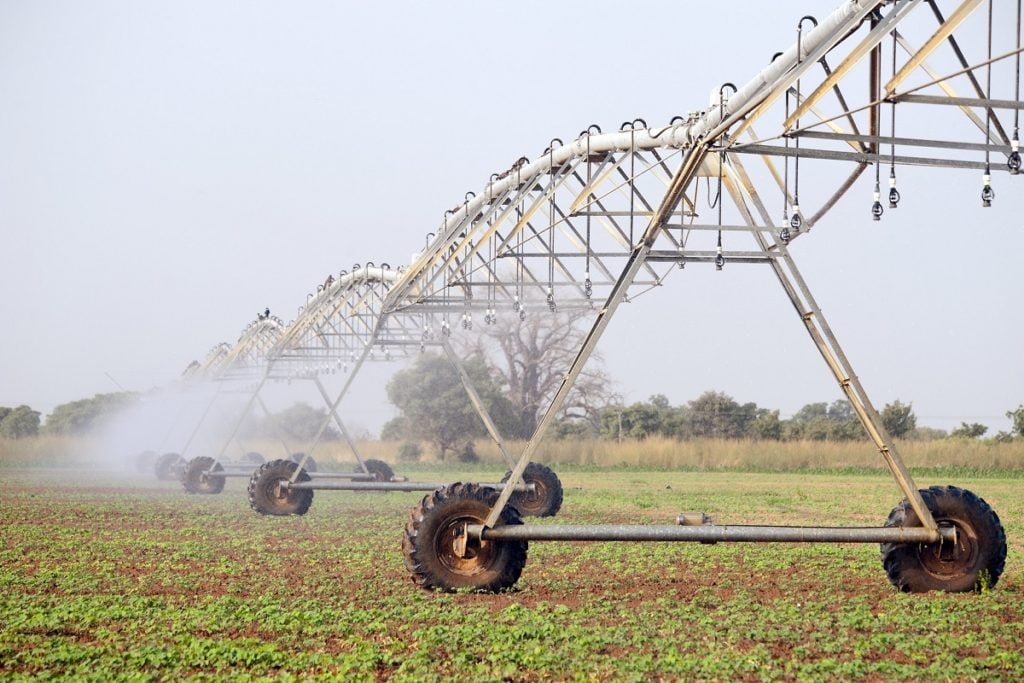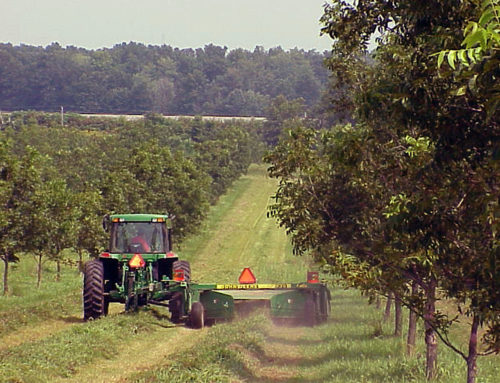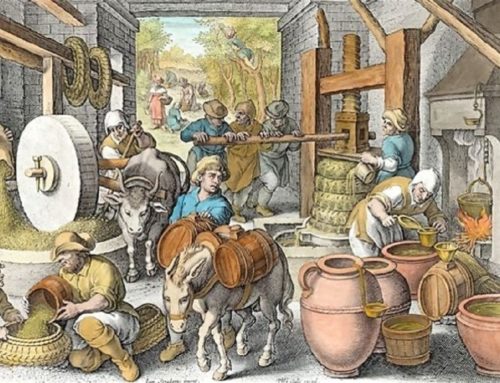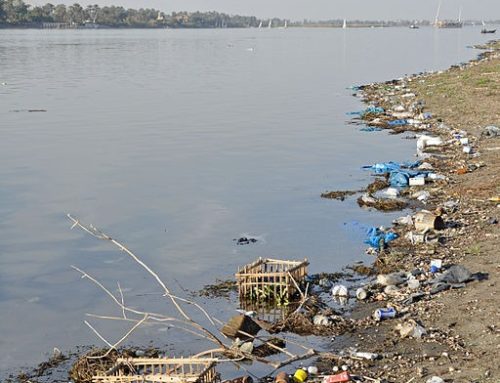Producing more food with fewer resources is one of the key challenges we face today. For my university dissertation, I conducted a year-long research project on a large commercial farm in Kenya investigating how irrigation and fertilizer inputs could be reduced. The original purpose of the study was to investigate whether biochar (charcoal used for soil amendment) could improve agricultural resource efficiency. However, my research turned up some unexpected and exciting results that sent me down a different path.
My findings suggest that:
- Potassium fertilization could substantially reduce irrigation requirements in water-scarce regions;
- We may be over-irrigating crops that seem water stressed; and
- Fertilizer guidelines need to better account for the interaction between nutrients and water, and between the different nutrients themselves.
I’m fairly confident that these results have significant implications for improving agricultural resource efficiency globally. They are also directly relevant to UK food imports because the Kenyan farm I was studying supplies fresh veg to UK supermarkets.
Pore quality
There’s been a good deal of interest in biochar as a somewhat controversial means of sequestering carbon; but in theory, it can also improve soil water and nutrient retention – a win-win! Physically, biochar has a porous structure that looks somewhat like a sponge and can help retain water. Chemically, biochar tends to have a large negatively charged surface area, which can improve the soil’s ability to hold positively charged ions (referred to as its ‘cation exchange capacity’ or ‘CEC’). These ions include key plant nutrients.
However, these characteristics are hugely variable and depend on factors including what the biochar is made from, how it is made and the type of soil it is added to.

Lattice of credit: Scanning electron microscope image of biochar showing the sponge-like structure that helps it retain water. Photo: Schmidt/Taylor (open source), via Biochar Journal.
In my study, I set up a series of crop trials to investigate whether adding biochar (made from onsite plant waste) to the farm’s sandy soils could maintain (and perhaps increase) maize yields using 30% less irrigation and fertilizer. The trials took place over the course of a year and included four harvests.
The biochar-amended soil gave impressive yield increases, of up to 70%, but only when irrigation and fertilizer were both simultaneously decreased by 30%. Yields did not significantly increase in biochar-amended soils when irrigation and fertilizer inputs were kept the same. This was somewhat counterintuitive.
Biochar substantially increased soil CEC (i.e. nutrient retention), but surprisingly not soil water retention. This was likely due to some production issues with the biochar used, which may have reduced its porosity.
A totally unexpected finding was that biochar addition significantly increased soil potassium content. Once again, this may have been due to production issues, which created more ash than intended. Nevertheless, it turned out to have potentially significant consequences.
Special K
The maize plants may have been water stressed under all conditions because the soil was sandy and the biochar didn’t improve water retention. However, potassium can improve plant water use efficiency, so adding biochar (and thus, potassium) to the soil may have reduced water stress and thus increased yields. This seems logical and suggests that potassium inputs may need to be higher in water-limited areas.
Intriguingly, potassium levels in plain soil (with no biochar) were already considered high according to the farm’s nutrient guidelines. This suggests that current guidelines for potassium addition may actually be too low in areas where water stress is limiting to growth. This idea is supported by a range of emerging research relating to potassium fertilisation, which includes additional studies on maize, wheat, barley and potato, amongst others.
Increasing potassium fertilisation seems to conflict with the original study aim of reducing resource inputs. However, a small increase in potassium may be outweighed by a substantial decrease in requirement for irrigation. Furthermore, nitrogen and phosphorus fertilizers are costly and environmentally damaging, whereas potassium is abundant, relatively cheap and has no substantial adverse environmental impacts.
Water scarcity is one of the main factors constraining global crop production, and further research is needed to determine the – potentially significant – role potassium fertilisation could play in addressing this.
However, none of this explains why yields increased only when irrigation and fertilizer were simultaneously decreased.
A wash out
It seems plausible that the maize plants were being over-irrigated, beyond the amount of water the soil could hold (the soil ‘field capacity’). Over-irrigation does not increase water availability (because the soil is already holding as much as it can), yet the amount of water the soil retains (at this maximum) may still be insufficient. Instead, over-irrigation wastes water and can wash away nutrients, referred to as nutrient ‘leaching’. If much of the potassium in the biochar was leached away, then it would not have been able to provide much benefit in terms of improving water use efficiency. Therefore, reducing irrigation may have actually reduced plant water stress.
More generally, nutrient leaching wastes fertilizer (including nitrate and phosphate) and can pollute water bodies. Consequently, we need to avoid the temptation to over-irrigate plants that seem to be water stressed, as this may be counterproductive, and environmentally damaging.

Wetter isn’t better: a centre pivot irrigation system. Photo: IWMI Flickr Photos (CC BY-NC-ND 2.0), via Flickr.
Nutrient ions can be electrostatically ‘adsorbed’ onto the charged surfaces of soil particles, called ‘exchange sites’. Ions that are adsorbed onto these sites are less easily leached. There are a finite number of exchange sites in any given soil, and so potassium ions (K+) compete with ammonium ions (NH4+) for negative exchange sites.
Reducing fertilizer application reduced the quantity of ammonium ions relative to potassium ions (added in the biochar). This may have increased potassium adsorption and thus plant uptake, leading to improved plant water use efficiency. If water was the key factor limiting growth, then the benefits of increased potassium uptake may have outweighed a decrease in ammonium uptake.
Colouring outside the guidelines
As we try to improve agricultural resource efficiency, location specific soil sampling is becoming increasingly widespread. Samples are analysed to determine whether they are lacking certain nutrients compared to a set of ‘ideal’ nutrient guidelines, and fertilizer applications are tailored accordingly. However, in my study, adding potassium beyond the guideline amount seemed to increase yields. This suggests that nutrient guidelines can be inaccurate, perhaps because they are too simplistic.
On the Kenyan farm, the key factor limiting growth seemed to be water, not specifically nutrients. Yet adding potassium (a nutrient) may have helped overcome water stress. Therefore, fertilizer guidelines need to better incorporate the interaction between nutrients and various environmental factors that may limit growth (particularly water). Further research is needed in this space.
Nutrient guidelines should also account for interactions between different nutrients (in this case reducing ammonium relative to potassium) and for rates of nutrient loss (in this case adding potassium was futile when leaching was high).
Char-actor limits
Whilst biochar improved soil CEC in my study and has improved nutrient and water retention in other studies, these effects are extremely variable. In fact, biochar can actually decrease yields in some cases (e.g. by detrimentally affecting pH). Furthermore, biochar production can be expensive and requires sufficient feedstock which must be sustainable, and must not have other higher value uses, and so, be available on favourable terms. Therefore, whilst biochar may be a viable and effective soil amendment in some situations, it is unlikely to be a worldwide solution to improving agricultural resource efficiency.
Nevertheless, in my study biochar highlighted other potential pathways to this goal. It provided a source of slow release potassium and showed that this can have substantial impacts on the use of water, and of more expensive, more environmentally damaging fertilizers. These effects may, however, be achieved equally well by other means, such as applying potassium fertilizers in small but regular doses.
There are three key lessons I take from the trial:
- Further research is needed into whether potassium fertilization could reduce agricultural water requirements in water-scarce environments.
- Irrigation guidelines need to better account for soil field capacity, to avoid over-irrigation.
- Fertilizer guidelines need to better account for:
- The interaction between nutrients and local environmental factors limiting to growth (particularly water);
- The interactions between nutrients; and
- The rate of nutrient loss.
These actions could help to improve agricultural resource efficiency globally. We are faced with the challenge of feeding more people in increasingly resource-scarce and water-stressed conditions, with intense pressure on land to support many services, such as housing, agriculture and habitat for the dwindling diversity of species on the planet. If we can meet this challenge in a way that simultaneously sequesters carbon, so much the better.
We must invest in further research to find environmentally responsible ways to overcome these issues.
Featured image: © Rebecca Mason, used by permission.







Hi Rebecca. Great to see this blog about your fantastic UCL dissertation research. Really important work and valuable findings.
All the best, Helen